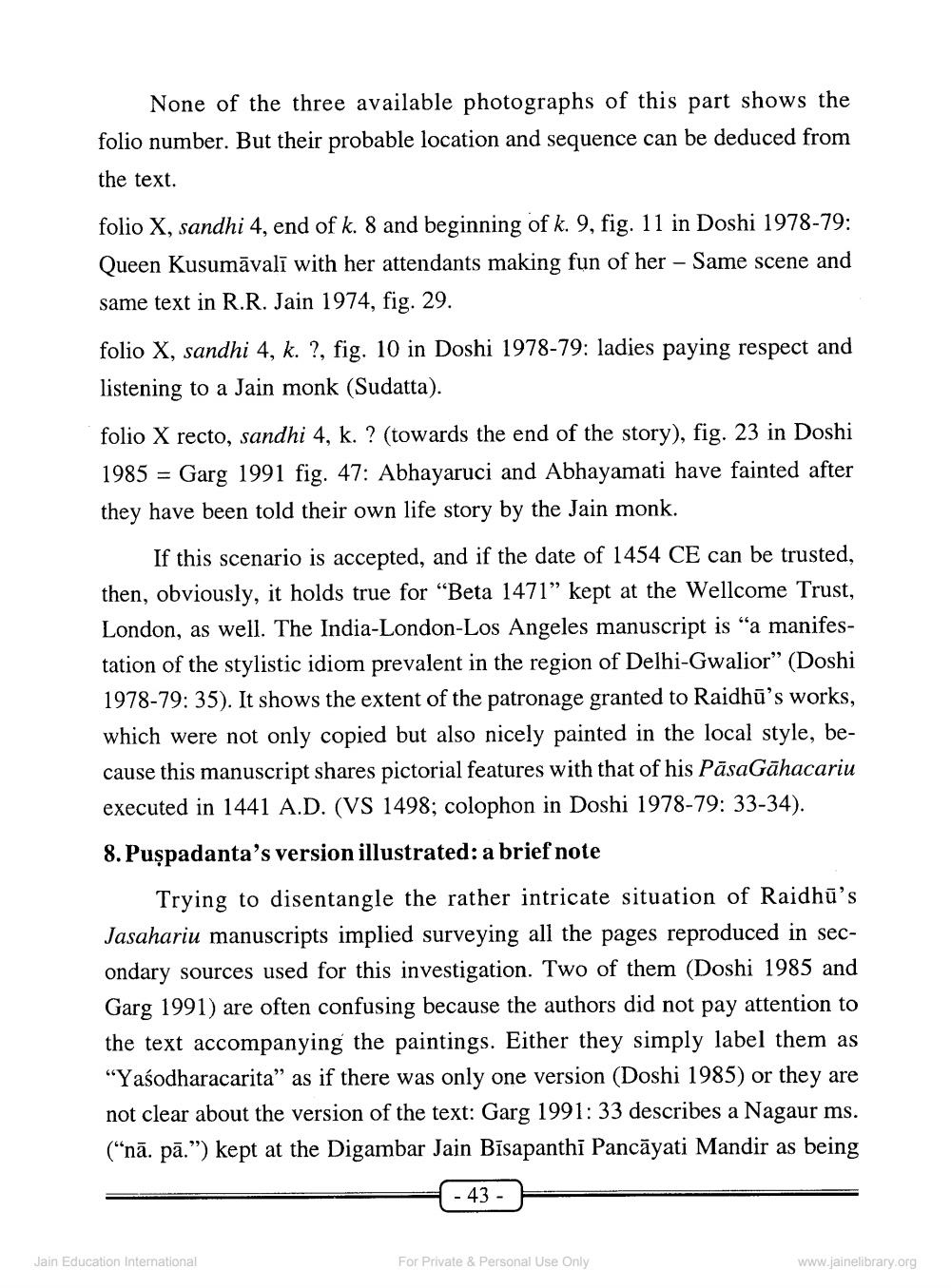________________
None of the three available photographs of this part shows the folio number. But their probable location and sequence can be deduced from the text.
folio X, sandhi 4, end of k. 8 and beginning of k. 9, fig. 11 in Doshi 1978-79: Queen Kusumāvalī with her attendants making fun of her - Same scene and same text in R.R. Jain 1974, fig. 29.
folio X, sandhi 4, k. ?, fig. 10 in Doshi 1978-79: ladies paying respect and listening to a Jain monk (Sudatta).
folio X recto, sandhi 4, k. ? (towards the end of the story), fig. 23 in Doshi 1985 Garg 1991 fig. 47: Abhayaruci and Abhayamati have fainted after they have been told their own life story by the Jain monk.
If this scenario is accepted, and if the date of 1454 CE can be trusted, then, obviously, it holds true for "Beta 1471" kept at the Wellcome Trust, London, as well. The India-London-Los Angeles manuscript is "a manifestation of the stylistic idiom prevalent in the region of Delhi-Gwalior" (Doshi 1978-79: 35). It shows the extent of the patronage granted to Raidhu's works, which were not only copied but also nicely painted in the local style, because this manuscript shares pictorial features with that of his PasaGāhacariu executed in 1441 A.D. (VS 1498; colophon in Doshi 1978-79: 33-34). 8. Puspadanta's version illustrated: a brief note
Trying to disentangle the rather intricate situation of Raidhu's Jasahariu manuscripts implied surveying all the pages reproduced in secondary sources used for this investigation. Two of them (Doshi 1985 and Garg 1991) are often confusing because the authors did not pay attention to the text accompanying the paintings. Either they simply label them as "Yasodharacarita" as if there was only one version (Doshi 1985) or they are not clear about the version of the text: Garg 1991: 33 describes a Nagaur ms. ("nā. pā.") kept at the Digambar Jain Bisapanthi Pancãyati Mandir as being
- 43 -
Jain Education International
For Private & Personal Use Only
www.jainelibrary.org




